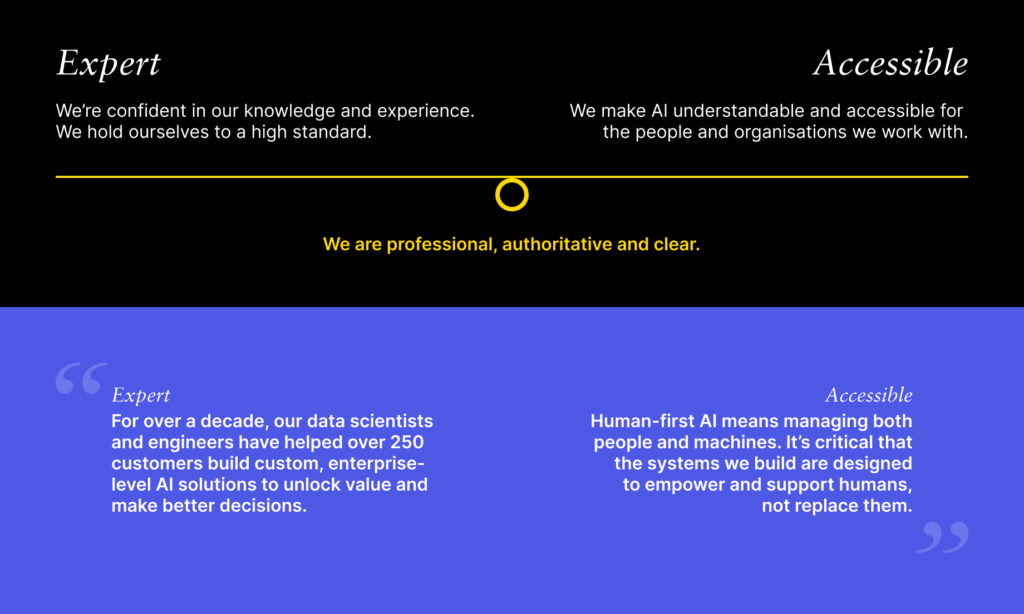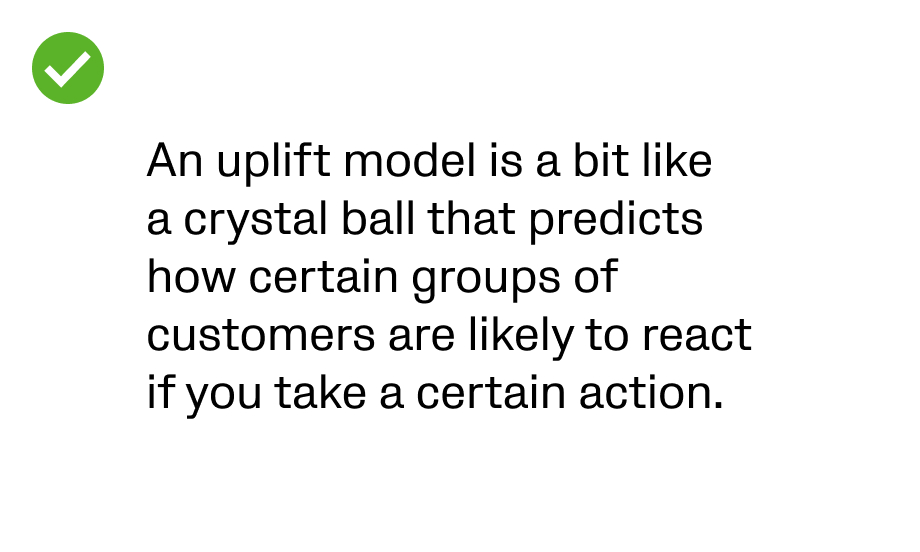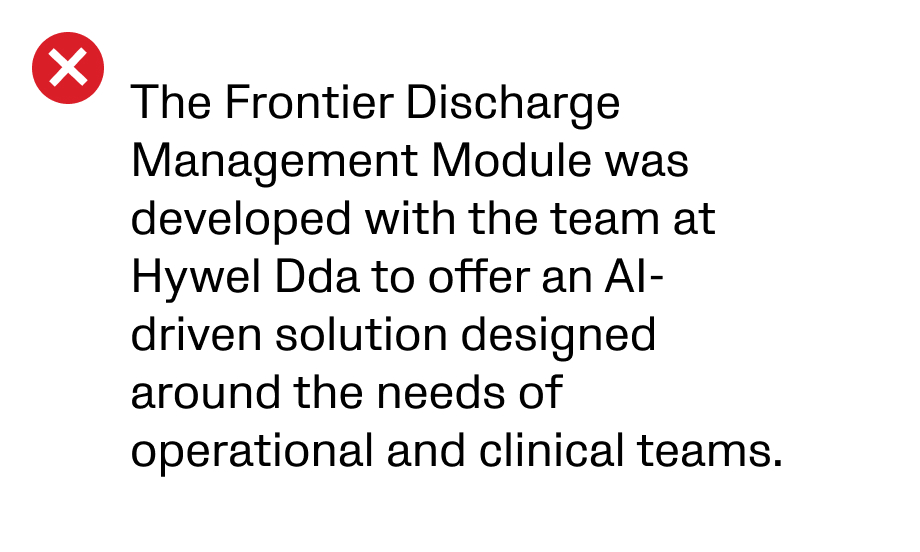Tone of voice: learn how we talk
Overview
We’re fortunate to have a lot of very smart people working at Faculty. That should make it easier, not harder, to understand the things we write and publish.
We keep complicated jargon to an absolute minimum. Where possible, we avoid it entirely. We never write something just to make ourselves look smarter at the expense of our audience’s understanding of what we mean. Clarity over cleverness, every time.
We believe that if we can’t explain a concept or project to a non-expert, we don’t understand the subject well enough ourselves. Just because a topic is complex it doesn’t have to be explained in a complicated way.
Everything we write should help our audience understand the reality of AI adoption; free of the frills, jargon, or exaggeration that often colours the way people think about AI.

Generally, we follow the Oxford Style Guide. By extension, we natively write in British English, as opposed to US English.
Additionally, our tone of voice has a few specifics of its own:
- We use active voice in our writing – ‘We built a machine learning model that cut expenditures by 10%’ is more accessible and interesting than ‘A machine learning model was installed, cutting expenditures by 10%.’
- We use personal pronouns wherever possible – ‘I’, ‘We’, ‘You’, ‘Your’ – to directly address the reader and help to give our copy an active voice. Read more on the benefits of using active voice here.
- We speak in plain English. Given the work that we do, it’s easy to slip into formal, academic, or business terminology. We keep things as straightforward as we can, without being chatty or overfamiliar.
- We don’t capitalise technical terms like ‘artificial intelligence’ or ‘natural language processing’.
- We always spell out an acronym the first time we use it. For example, write ‘machine learning’ before using ‘ML’ thereafter.
- We write titles in sentence case (as opposed to capitalising each word).
- We spell out numbers one to nine, but anything 10 and over should be written in numerals.
- We use contractions, as much as possible – ‘we’re’ instead of we are, ‘we’ll’ instead of ‘we will’.
- We limit the use of exclamation marks [!] preferably keeping them to zero. Most of the time they make copy sound alarmist, frantic, and unprofessional.
GenAI
As practitioners of human-first AI, we welcome the use of AI to support and augment human creativity. Tools such as ChatGPT are fantastic copilots for helping to flesh out ideas, iterate copy, and provide working first drafts.
However, unedited AI writing should never be submitted as a replacement for our own work. If we have to entirely rely on machines to explain the topics we’re writing about, then we don’t understand those topics well enough ourselves. Our copy should always be original and ownable. Make it your own.
Do’s
Use active voice, with personal pronouns:

Use an authoritative, conversational style:

Use accessible language:

Use titles that focus on the readers’ needs, not technical implementation:

Relate abstract AI concepts to familiar realities:

Dont’s
Don’t slip into passive voice:

Don’t capitalise technical terms (unless part of the term is a name):

Don’t use exclamation marks. They make copy appear frantic or unprofessional:

Don’t use sales speak or business jargon:

Don’t use acronyms without defining them the first:
